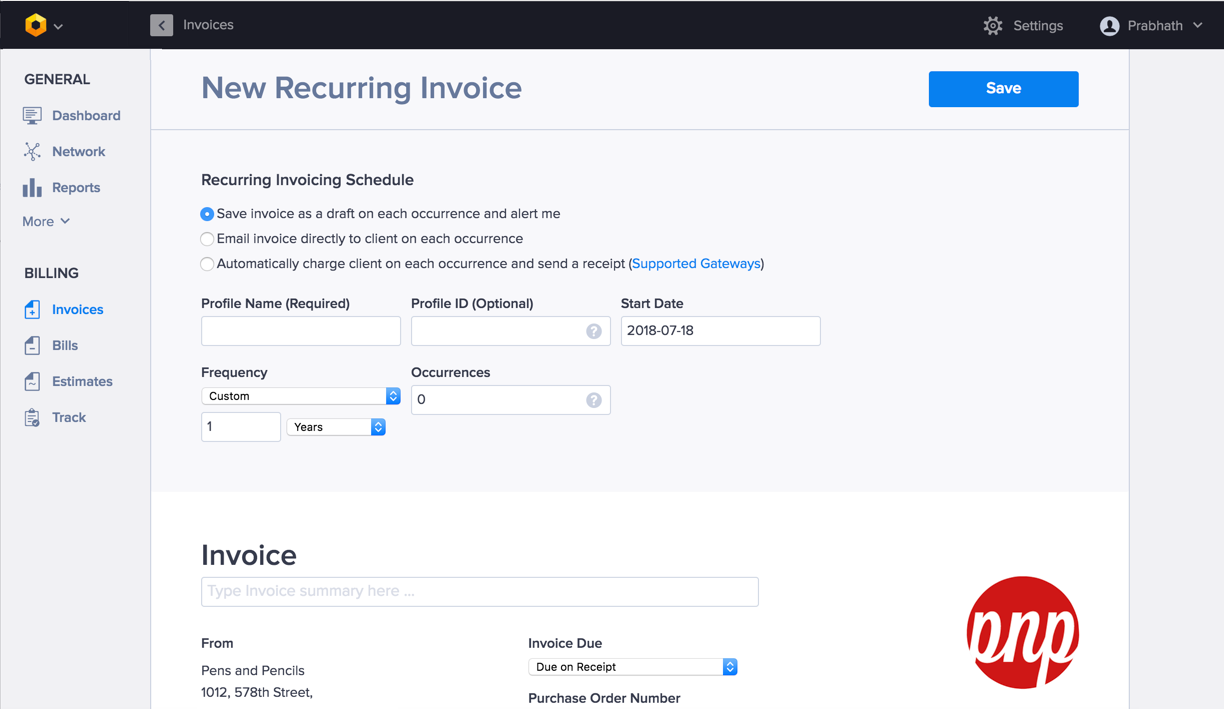Ad Hoc vs. Monthly Invoicing: Does It Matter Which One?
Invoicing is usually a key element of any small business or freelance operation – and with good reason. Without a solid invoicing process, you may not get paid at all, which is obviously a considerable problem.

However, the frequency with which you invoice could also have an effect on whether you’re paid promptly. Ultimately, you’ll have to make a choice – process invoices at the same time every month, or send them when a billable task is done or a project is completed on a per-client basis.
A better way to manage your finances
With Hiveage you can send elegant invoices to your customers, accept online payments, and manage your team — all in one place.
This post will look at both methods of distributing invoices and how they differ. We’ll also explore the pros and cons of each, and talk about which one may suit you best.
The Difference Between an Ad Hoc Invoice and Monthly Invoicing
On the surface, ad hoc invoicing and scheduled (e.g., monthly) invoicing are clearly different. Of course, a monthly process is carried out at a set time on a regular recurring basis. It’s the ‘traditional’ way of issuing invoices, and is the default option for many businesses. In fact, they often settle on a monthly invoicing procedure as a matter of course.
However, there’s an alternative way that can pay dividends (almost literally). Ad hoc invoicing sees you request payment as soon as a project is complete. This has a direct benefit in that the quicker you issue an invoice, the greater the chance it’s paid promptly.
Of course, each method has its drawbacks. For monthly invoicing, you’re potentially recouping a larger lump sum, which is obviously a good thing – although if payment isn’t made on time, this could lead to financial difficulties. The greater time between the end of a project and the invoicing date could also have an impact, as the work you did might not be fresh in the client‘s mind.
With ad hoc invoicing, you bill the client immediately, giving them impetus to settle the invoice and move onto the next project. There’s a turnover benefit to be had, and as long as there’s regular work coming in, could net you more money throughout a similar set billing period.
However, this could lead to additional headaches if your client is tardy with settling invoices, as there could be more payments outstanding, which is extra administrative hassle. Not only that, the effort required to issue and chase payments constantly could erode the time you have to dedicate to your other projects. It’s arguably less scalable than other solutions.
Ad Hoc Invoices vs. Monthly Invoicing: Does the Choice Matter?
As with many of these types of questions, the answer is ultimately: it depends. On the surface, the choice is simple if you have concerns about discipline and allowing for financial time. Monthly invoicing is potentially going to take up a huge chunk of your day, but you’ll only have to do this once per invoicing period. This can make sense if you have a lot of clients.
In contrast, for those with high-paying, yet few clients will likely find ad hoc invoicing to be more beneficial. While you’re spending more of your day-to-day time issuing ad hoc invoices and chasing payments, it will pay to get these large outstanding balances cleared as quickly as possible.
Regardless of your approach, having a solid invoicing solution by your side is key to ongoing success. Let’s take a look at an ideal that will enable you to handle practically any invoicing structure.
How Hiveage Sends Invoices Ad Hoc or Monthly
Fortunately, both methods of issuing payments are easily implemented when using the right invoicing solution. Hiveage is incredibly flexible, and its invoicing function enables you to bill clients regularly on a fixed billing cycle or simply stick to ad hoc invoicing, while reducing the disadvantages of both approaches.
For example, if you have a need to get invoices out quickly, you can do so with a single click. Hiveage includes stylish and elegant templates to make sure your invoices are an extension of your branding.
You could even turn your estimates into full-fledged invoices. It’s a snap to do so, and it means your client will have already potentially approved payment, perhaps well before the invoice date.
Setting up flexible and regular billing is also a piece of cake. Within the Hiveage dashboard you can set up client payment profiles (i.e., an invoicing document mapped to client accounts) that bill on a recurring basis, thus resulting in automatic account maintenance. This is accessible from the invoices tab in Hiveage.
Finally, Hiveage can take the sting out of the administrative drain on your time. There’s a clear audit trail of an invoice’s current status, including the date and time, the action carried out, and where invoices have been sent. It will even disclose whether clients have only partially paid their invoice.
Conclusion: Ad Hoc Invoicing or Not?
There are many aspects of invoicing that commands your attention, not least the frequency of your invoice run. Getting this aspect of various business transactions right could see your income improve, simply due to the prompt payment from clients.
The traditional way, of issuing invoices is at a set regular time each month. However, solutions such as Hiveage enable you to setup a custom frequency, meaning you can improve flexibility as far as the client is concerned. Overall, if you’re happy with the extra legwork, deciding to create ad hoc invoices could see you with less aged receivables down the line.
Do you have an opinion on ad hoc invoicing vs. monthly invoicing? Let us hear them in the comments section below!
Join thousands of business-savvy entrepreneurs on our mailing list.
Curated emails that’ll help you manage your finances better.




